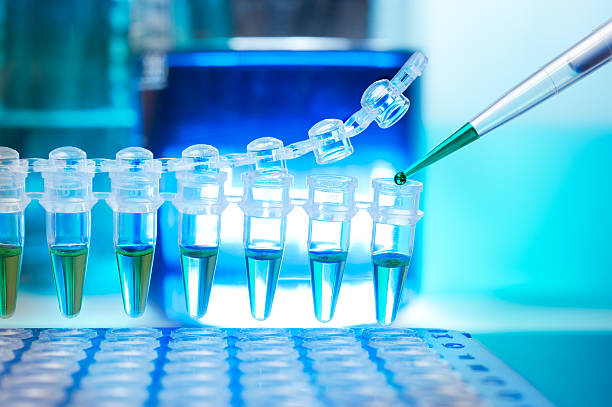Loading...
Gentaur
Scientific Publications

Polymerase Chain Reaction (PCR) remains a cornerstone molecular biology technique. Since its discovery, continuous improvements have driven the potential of PCR—enabling an era of advanced PCR technologies. These developments have enhanced sensitivity, specificity, throughput, and quantitative accuracy, enabling researchers to interrogate the genome with finer resolution than ever.
In this blog, we delve into the advanced evolution and application of PCR platforms and an overview of key developments and references to reliable academic sources like NCBI, PubMed, NIH, and .edu websites.
Quantitative PCR, also known as real-time PCR, is one of the most widely used PCR technologies. It allows researchers to quantify DNA, RNA, or gene expression levels by measuring the fluorescence emitted during the amplification process. Unlike traditional PCR, where results are observed at the end of amplification, qPCR provides real-time data for each amplification cycle, enabling more precise and reproducible measurements.
Key Features:
For more on the principles and application of qPCR :
Digital PCR (dPCR) enables absolute quantification of nucleic acids with precision far exceeding traditional PCR techniques. By partitioning the PCR reaction into thousands of individual reactions, it ensures single-molecule detection. This method is highly valuable for detecting low-abundance DNA, gene mutations, and rare variants, especially in clinical diagnostics and genetic research.
Multiplex PCR allows for the amplification of several genetic targets in a single PCR reaction by using multiple primers for different sequences. This technology is particularly useful in diagnostic applications, where the simultaneous detection of multiple pathogens or genetic variants is required.
Reverse Transcription PCR (RT-PCR) is used to analyze RNA samples by converting them into complementary DNA (cDNA) through the enzyme reverse transcriptase. RT-PCR is crucial in the study of gene expression and transcriptome profiling as it allows researchers to study RNA levels and splice variants.
Key Features:
Touchdown PCR is an innovative approach that progressively lowers the annealing temperature during the initial cycles of amplification. This helps to improve the specificity of primer binding, especially when working with highly homologous sequences or complex DNA templates.
Key Features:
For detailed insights into Touchdown PCR:
Ultra-rapid PCR technologies use microfluidic systems or infrared thermocycling to significantly reduce the time required for amplification, delivering results in a matter of minutes rather than hours. These innovations are essential for emergency diagnostics and rapid testing applications.
Advanced PCR technologies are transforming the landscape of molecular biology and diagnostics. These techniques continue to evolve, offering higher precision, sensitivity, and broader applicability. From clinical diagnostics to research applications, PCR technologies are pivotal in advancing our understanding of genetics, disease detection, and biotechnology.